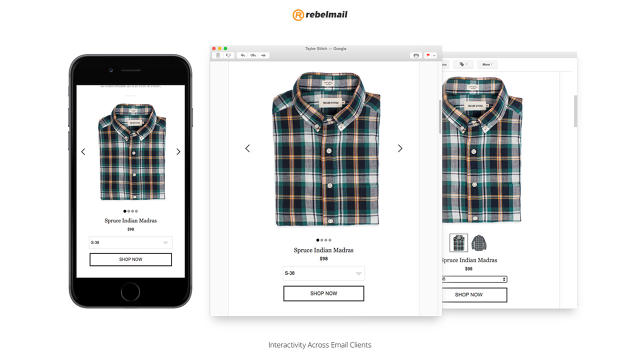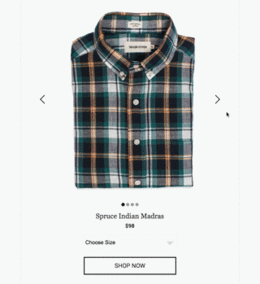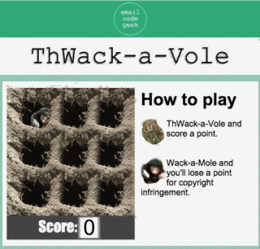Like many tech-conference organizers, the people behind The Email Design Conference made sure to email attendees well ahead of time with the Twitter hashtag for the event.
But when they opened that email, those going to the conference were amazed to find not just a link to the Twitter feed for the convention, but a live, scrolling collection of just-posted Tweets using the hashtag.
"We embedded a live, dynamic Twitter feed in the email itself, so as people were opening the email and started to tweet about the conference hashtag, it started to appear in the email," says Justine Jordan, the marketing director at Litmus, the Boston-area email testing and analytics company that organized the August conference.
In an era where Twitter feeds appear everywhere, from wristwatches to billboards, simply embedding one in another familiar type of digital message might not seem like much of a feat. But adding live data and interactivity to email, a decades-old medium that most haven't associated with innovation since the golden age of AOL, is actually a new and surprisingly intricate technique that experts say can help change how businesses connect with their busy customers.
"Certainly, it seems like every year, people are in more and more of a hurry, and that definitely is the case with email users," says Chad White, research director at Litmus. "If you can give them something actually in the email that's actionable, they're way more likely to engage with that, versus forcing them to click through to a website where they have to regain their bearings and find the things that they're interested in."

That means taking marketing features traditionally found in a website or app, like a rotating carousel showing different versions of a product, or an animated GIF highlighting an ongoing sale, and adding them directly to marketing emails. New York startup RebelMail has even demonstrated early versions of an online shopping app contained entirely within an email message, where buyers would only need to be redirected to a store's website to make their final checkouts.
"That's one of our concepts—one of our apps that we're building and working towards," says Mark Robbins, a developer at RebelMail.
The challenge, he and other developers say, is making sure that emails render properly across the huge variety of email programs commonly in use.
Before an interactive or heavily styled email can be sent to customers, it needs to be tested on multiple versions of desktop email programs like Microsoft Outlook and Apple Mail, on webmail services like Gmail and Yahoo, and on iOS and Android apps from many of the same vendors.

"It's not just inboxes but also browsers," says White. "Your email in Gmail can look different, whether or not the user is using Chrome, Firefox, or Internet Explorer."
A big part of Litmus's business involves automating those tests, sending clients' draft marketing messages to an array of physical and virtual machines, each of which takes a screenshot of the email in a different combination of operating system and email program.

"We automate that entire process of taking the screenshot and sending it back to the customer," says Jordan, explaining that Litmus customers can generally see an array of screenshots within 10 seconds.
Most modern email software lets email contain some subset of the HTML and CSS languages used to structure and style websites, but the exact features allowed and how they're handled can vary drastically, leading to lots of trial and error.
"On the web, you have things like Bootstrap, things like jQuery, where it's kind of, hey, you want to do a carousel, you use this method, and it creates a carousel for you," says email developer Justin Khoo, an independent developer and the author of the email design blog FreshInbox. "Email, it's still really new—people are still figuring out what works and what doesn't."
Supporting old clients also forces email coders to write HTML in ways most web developers abandoned years ago, Khoo says.
"Nobody designs websites with tables any more, but if you look at the source of every email, that's a table in there—there's tables everywhere," he says.
And for security's sake, almost no email software allows JavaScript, the language typically used to add interactivity and live data updates to websites, so email developers have had to find clever ways to build that same functionality using CSS.
The styling language is far from a full-fledged programming tool, but it has enough support for animation and reacting to where users have clicked and tapped to let developers build surprisingly complex apps: RebelMail's Robbins even developed an email-embeddable whack-a-mole game that moves the rodents and keeps score without a line of JavaScript.

Email developers using more advanced features typically try to make sure their emails degrade gracefully when they're opened in more primitive clients, says Geoff Phillips, a senior email specialist at testing and analytics firm Email on Acid. That's because experiments have shown most email recipients will quickly give up on a broken email rather than try it in another program or on another device, he says.
"You don't want there to be a broken box where a video should be," he says. "With video in email, usually the fallback is to have an image that has a playback on it and then link that to your YouTube page that has the video."
But despite the complexities, marketing companies say they've found getting email right is well worth it.
"Really, email marketing for businesses continues to be, as recent as this year, the highest performing marketing channel for companies," says Kraig Swensrud, the chief marketing officer of email marketing firm Campaign Monitor.
A McKinsey report published last year found email helped surveyed companies attract nearly 40 times as many customers as Facebook and Twitter combined. Marketing companies have also reported that adding video, animation, and other modern features can boost email engagement and click-through rates. One oft-cited Oracle Marketing Cloud report found a British e-commerce client boosted its email response rate by 32% after making improvements like integrating interactive features and mobile-responsive design.
"Companies don't want to just send an email," says Swensrud. "They want the recipient to open the email multiple times. They want the recipient to really engage with the content. They want the recipient to click on things within the email."
And with the variety of email clients in use growing, not shrinking, those complex emails are going to continue to require complex programming techniques.
Still, not having the full power of the web in email messages—which are essentially placed in users' inboxes by other people, not downloaded in response to a search or click like web pages—might not be entirely a bad thing, says Robbins.
"It's the equivalent to a door-to-door salesman as opposed to going out to a shop," he says. "You have to be careful with that, and you have to respect the users because of that."